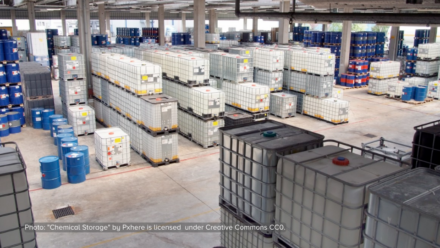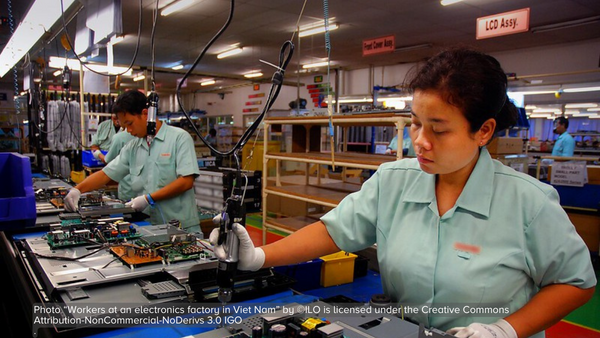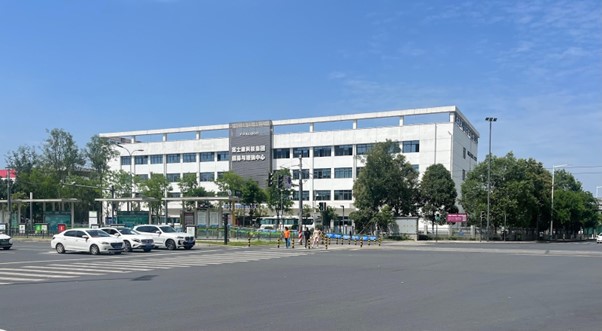by Jenny Chan – The Hong Kong Polytechnic University
Last month students and recent graduates from more than a dozen mainland Chinese universities stood up in solidarity support with workers of Jasic Technology, a private company listed on the Shenzhen Stock Exchange. The student activists include those from the Peking University, Tsinghua University, Nanjing University, and Sun Yat-sen University.
They wore t-shirts with the slogan “unity is power” printed in bold red. They produced videos of public speeches and peaceful demonstrations in front of the Jasic factory in the Pingshan District of Shenzhen City, a key node of globalized production in South China. They tweeted open letters and blogs and photos via social media. In response, Jasic management retaliated against workers who initiated to establish a democratic union since this May and refused immediate re-instatement of dismissed workers, triggering waves of rights defense protests and social justice campaigns. As of writing, 14 workers were currently still being detained by local authorities, and 50 students were forcibly taken by the riot police, crushing the worker-student coalition.
Labor disputes in China
Sign the open letter to the Shenzhen Government and Federation of Trade Unions
The conflicts between worker and management over punitive fines, wage deductions, and non-payment of social security benefits at Jasic are not an isolated case. Facing rights infringement and harsh treatment, aggrieved workers have resisted in numerous individual and collective forms. In 1982 China removed the right to strike from its constitution and the only official union organization is The All-China Federation of Trade Unions, an integral part of the government. Without the leadership of union, workers like Jasic have taken independent actions to defend their legal rights and interests.
Government statistics indicate that, in 1996, 48,121 labor disputes (including individual and collective cases) were accepted for arbitration, involving 189,120 persons nationwide. The incidence of arbitrated labor disputes, along with mounting protests, has been growing rapidly. In the global economic crisis of 2008, when millions of workers were laid off, the number of cases skyrocketed to 693,465—nearly double from year ago, involving more than 1.2 million laborers across the country. Following a brief decline, since 2011, labor dispute cases have shot up annually, reaching an unprecedented 813,859 cases in 2015, as documented annually in the China Labour Statistical Yearbook.
In addition to filing cases through dispute resolution mechanisms, workers have sought to strengthen their associational power to better protect themselves. Jasic workers had submitted their written intent to form a union in accordance with China’s Trade Union Law. They had prepared to engage in dialogue with management.
On 1 August 2018, under the mounting pressure, Jasic executives quickly set up a union preparatory committee. From 2005 when the company was founded, Jasic, not unlike many other companies, had refused to recognize workers’ fundamental rights to unionize. On 20 August, Jasic called the first meeting to “elect” nine union committee members.
How were the elections run? Who were the union chair and committee members? Apparently the Jasic management has controlled the sociopolitical space of organizing at the workplace level.
A worker-student coalition
For nearly two months now, a core group of university students, along with tens of thousands of fellow students from all over the country, have been supporting Jasic workers in their independent struggles against the repressive regime. This young cohort was born in the 1990s and early 2000s, when China accelerated its opening to the world and privatized its industries to enhance “flexibility” of work and employment in the market.
In and through self-organized labor studies groups, internships, and waged work, the student activists understand deeper the urgent needs for more progressive legal reforms and fairer share of economic grains of direct producers. The effective use of digital media to present a united worker-student voice, despite removal and blockage of the content from internet by Chinese authorities, has drawn attention from academics and the wider public at home and abroad.
High-profile labor insurgence has impacted social awareness of the students and far beyond. In recent years, a young generation of migrant factory workers at Foxconn (Shenzhen), Honda (Foshan), and Yue Yuen (Dongguan) have staged numerous strikes and protests to attempt to democratize their respective company unions. The workers’ demand for higher wages and better benefits are among the top priorities. As capital moves from coastal Guangdong to interior provinces to tap into cheaper labor and more abundant land, conflicts over unpaid wages and benefits and arbitrary dismissals may well increase across regions.
University students share concerns about fair labor in an age of contracting and temporary work. They identify with Jasic workers that a functioning union that wins the trust and confidence of workers is a worthy effort of workers and students.
The unyielding battle for social and economic justice from the bottom-up at Jasic and other workplaces has written a new page in contemporary Chinese society.










